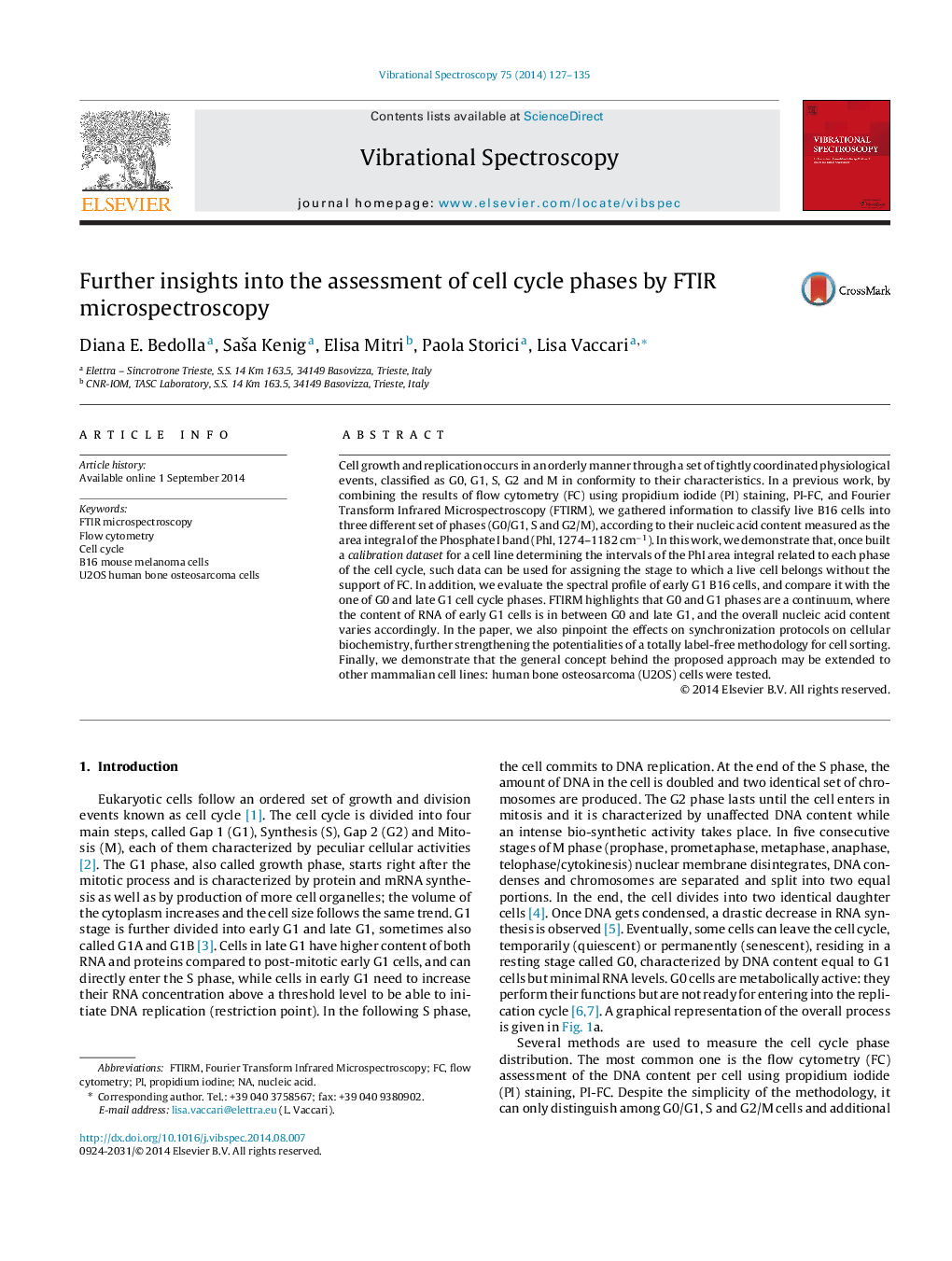| Article ID | Journal | Published Year | Pages | File Type |
|---|---|---|---|---|
| 1249884 | Vibrational Spectroscopy | 2014 | 9 Pages |
Cell growth and replication occurs in an orderly manner through a set of tightly coordinated physiological events, classified as G0, G1, S, G2 and M in conformity to their characteristics. In a previous work, by combining the results of flow cytometry (FC) using propidium iodide (PI) staining, PI-FC, and Fourier Transform Infrared Microspectroscopy (FTIRM), we gathered information to classify live B16 cells into three different set of phases (G0/G1, S and G2/M), according to their nucleic acid content measured as the area integral of the Phosphate I band (PhI, 1274–1182 cm−1). In this work, we demonstrate that, once built a calibration dataset for a cell line determining the intervals of the PhI area integral related to each phase of the cell cycle, such data can be used for assigning the stage to which a live cell belongs without the support of FC. In addition, we evaluate the spectral profile of early G1 B16 cells, and compare it with the one of G0 and late G1 cell cycle phases. FTIRM highlights that G0 and G1 phases are a continuum, where the content of RNA of early G1 cells is in between G0 and late G1, and the overall nucleic acid content varies accordingly. In the paper, we also pinpoint the effects on synchronization protocols on cellular biochemistry, further strengthening the potentialities of a totally label-free methodology for cell sorting. Finally, we demonstrate that the general concept behind the proposed approach may be extended to other mammalian cell lines: human bone osteosarcoma (U2OS) cells were tested.
